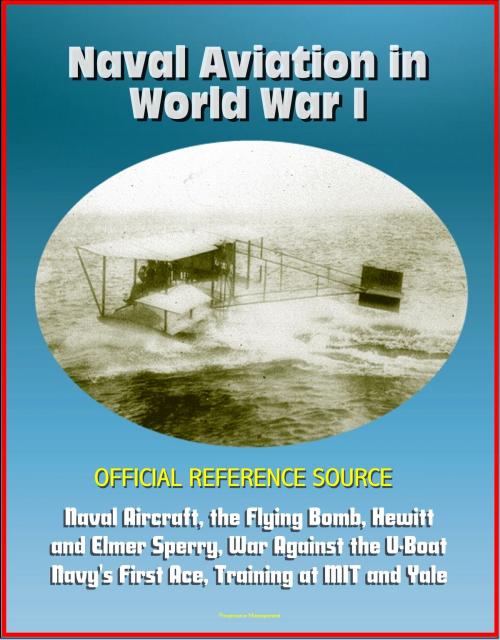Naval Aviation in World War I: Official Reference Source, Naval Aircraft, the Flying Bomb, Hewitt and Elmer Sperry, War Against the U-Boat, Navy's First Ace, Training at MIT and Yale
Nonfiction, History, Military, Naval, World War I| Author: | Progressive Management | ISBN: | 9781301648245 |
| Publisher: | Progressive Management | Publication: | January 29, 2013 |
| Imprint: | Smashwords Edition | Language: | English |
| Author: | Progressive Management |
| ISBN: | 9781301648245 |
| Publisher: | Progressive Management |
| Publication: | January 29, 2013 |
| Imprint: | Smashwords Edition |
| Language: | English |
When the call to battle sounded in April 1917, the Navy air arm could muster at its one air station only 48 officers and 239 enlisted men with some experience in aviation, and 54 aircraft none of which was fit for patrol service. The problems of building this small force into an effective fighting unit were enormous. Yet, when the Armistice was signed 19 months later, there were 43 air stations in operation at home and abroad, an aircraft factory in production, and numerous schools, assembly plants, repair depots and other facilities providing the needed logistic support. Aviation personnel numbered over 39,000, a figure nearly equal to the total in the entire Navy at the start of the war. This official Navy history is the first published work to deal specifically with the accomplishments of Naval Aviation in the first World War. Based on official sources as well as the recollections of participants, it is authoritatively presented through an interesting combination of official and personal accounts.
It is also the history of a beginning made under stress of war — a beginning in which the men of Naval Aviation first demonstrated the potential of aviation as an arm of sea power and set the course for its future growth. The success with which they carried out their task is in large measure responsible for the position of aviation at the forefront of Naval power today.
Contents * In the Beginning * First Naval Aviation Unit in France * Aviation Ground Schools at MIT * The First Yale Unit * Trained by the Royal Flying Corps * The Navy Builds an Aircraft Factory * The First Lighter-than-Air Class at Akron * WWI Diary Recounts Air/Sea Saga * Naval Aircraft of World War I * The Second Yale Unit * U. S. Markings * Rare Birds * Developing the Flying Bomb * The Origin of Navy Wings * The War against the U-Boat * A Medal of Honor Exploit * The Navy's First Ace * The Northern Bombing Group * At the End
When the call to battle sounded in April 1917, the Navy air arm could muster at its one air station only 48 officers and 239 enlisted men with some experience in aviation, and 54 aircraft none of which was fit for patrol service. The problems of building this small force into an effective fighting unit were enormous. Yet, when the Armistice was signed 19 months later, there were 43 air stations in operation at home and abroad, an aircraft factory in production, and numerous schools, assembly plants, repair depots and other facilities providing the needed logistic support. Aviation personnel numbered over 39,000, a figure nearly equal to the total in the entire Navy at the start of the war. This official Navy history is the first published work to deal specifically with the accomplishments of Naval Aviation in the first World War. Based on official sources as well as the recollections of participants, it is authoritatively presented through an interesting combination of official and personal accounts.
It is also the history of a beginning made under stress of war — a beginning in which the men of Naval Aviation first demonstrated the potential of aviation as an arm of sea power and set the course for its future growth. The success with which they carried out their task is in large measure responsible for the position of aviation at the forefront of Naval power today.
Contents * In the Beginning * First Naval Aviation Unit in France * Aviation Ground Schools at MIT * The First Yale Unit * Trained by the Royal Flying Corps * The Navy Builds an Aircraft Factory * The First Lighter-than-Air Class at Akron * WWI Diary Recounts Air/Sea Saga * Naval Aircraft of World War I * The Second Yale Unit * U. S. Markings * Rare Birds * Developing the Flying Bomb * The Origin of Navy Wings * The War against the U-Boat * A Medal of Honor Exploit * The Navy's First Ace * The Northern Bombing Group * At the End















